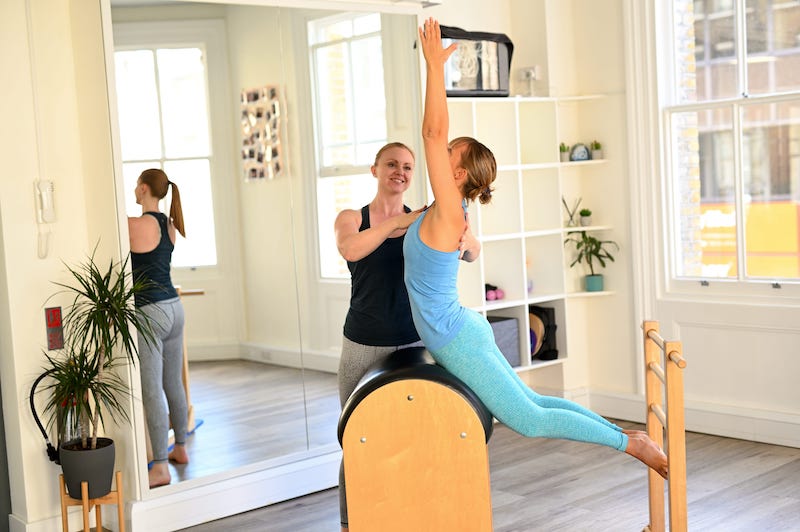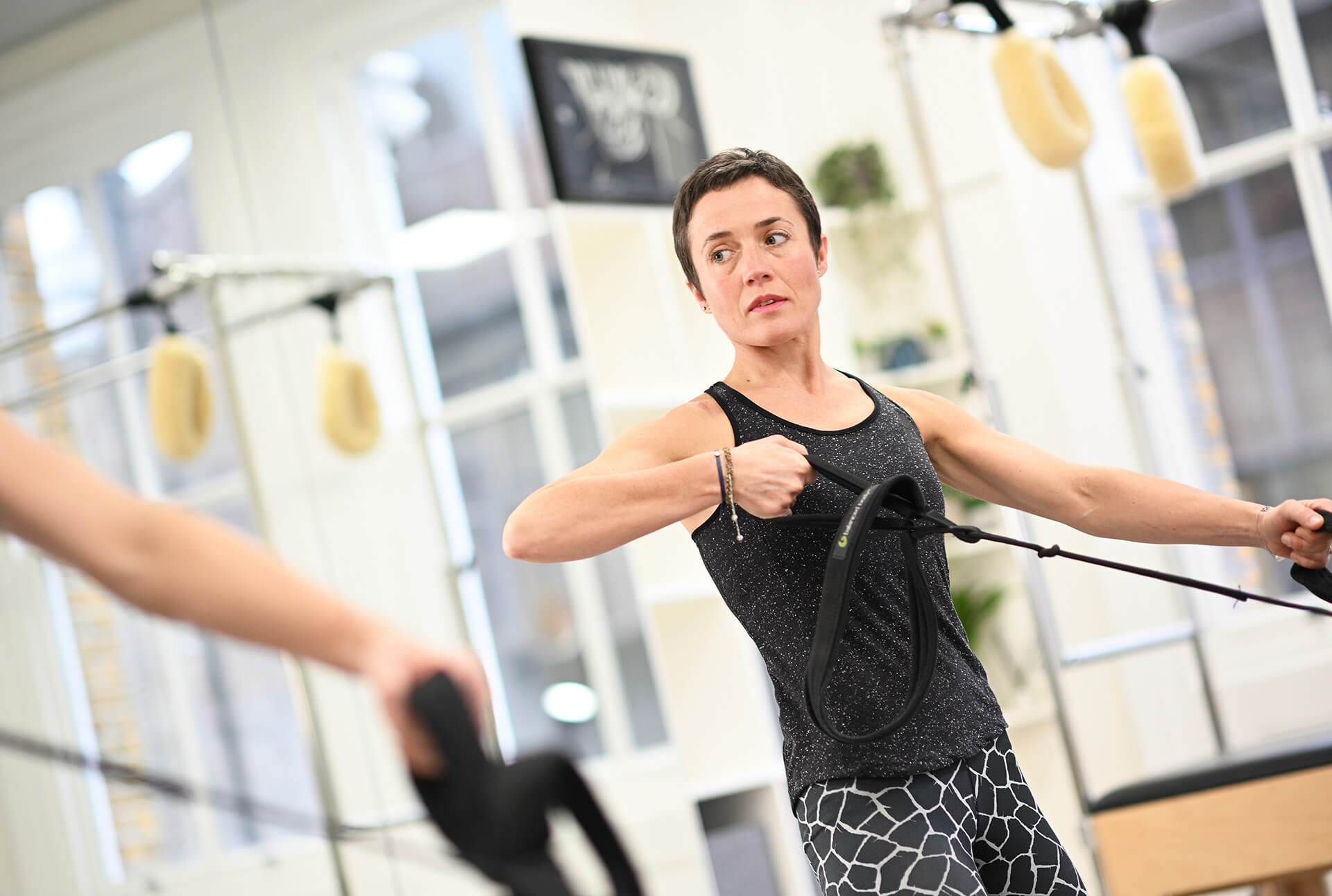Key Contributor: Dionne Appiah, Clinical Pilates Instructor
Complete Pilates always use the equipment in their classes and 1-2-1 sessions.
Why? Because we agree with Joseph Pilates when he said that while “you can exercise without machines” it’s just “not as efficient.”
Reformer classes are pretty popular these days, and so many you will have tried this piece of apparatus and know how amazing it is for toning your body, increasing your flexibility and for rehabbing after an injury.
Few of you will have been into a Pilates studio to experience a full equipment session, however. And this means you won’t be familiar with how effective the rest of the equipment – the trapeze table, the chair and the ladder barrel – is.
So, to introduce you to the studio machines (and encourage you to start practising Pilates on them) we’ve been posting each week on the uses and benefits of the different pieces of equipment.
This week we’re turning our attention to the Pilates ladder barrel and Pilates spine corrector. These are two pieces of equipment that don’t get much press, but they really are amazing when it comes to building a balanced and healthy body.
But how exactly do the ladder barrel and Pilates spine corrector work? And why is using them so beneficial?
Keep scrolling to find out the answers to these questions – and much more!
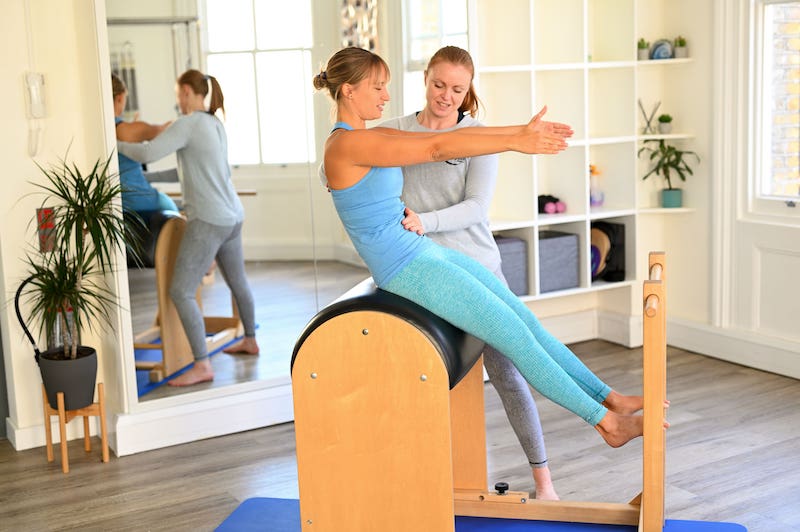
What is the Pilates Ladder barrel?
Like the trapeze table and chair, the ladder barrel is one of the original pieces of equipment and it was designed by the inventor of Pilates, Joseph Pilates. But unlike those pieces of apparatus, which he made by adapting pieces of furniture, Joe made the Pilates barrel out of something much more surprising: an empty beer keg!
The ladder barrel in Pilates studios today is a far cry from the humble beer keg. In fact, it is now quite a large and imposing piece of equipment made from wood and leather.
The ladder barrel has retained its curved, barrel-like form though, and this makes it stand out against the rest of the boxy and rigid-looking studio equipment.
Given the shape of the ladder barrel, it won’t surprise you to learn that it supports very different types of movement to the trapeze table, reformer and chair.
Ladder barrel – the specifics
As its name suggests, the ladder barrel is made up of two parts: a wooden ladder with rungs and the barrel, which is padded and leather-clad for comfort.
The two component parts of the ladder barrel are attached to one another by a sliding frame base. This frame can be adjusted to make it work for different heights and builds.
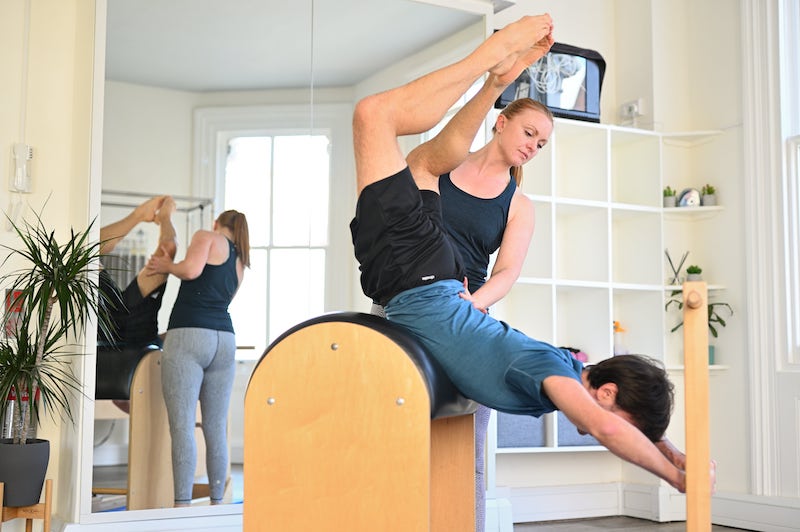
The Pilates spine corrector
As mentioned in the introduction, you probably won’t have come across a ladder barrel outside of the Pilates studio environment. You may, however, have seen or even used a Pilates spine corrector in a reformer or mat class.
This is for obvious reasons: in contrast to the large ladder barrel, the spine corrector is compact and so a studio can fit a lot more of these in at once!
The spine corrector has similar properties to the barrel, with a large curved surface being its main feature. This means you can perform most of the ladder barrel exercises on it.
There are obvious differences between these two pieces of kit, though. Aside from missing the “ladder” aspect of the ladder barrel, the spine corrector also has a less dramatic curve than the barrel. This reduces the possible range for the body to move in and can be viewed as a limitation of the spine corrector.
At the same time, the gentle curve of the spine corrector can be a good thing when it is used on a beginner or someone with an injury.
The spine corrector: the specifics
The spine corrector is made from either wood and leather for the sturdier studio version, or from foam for a light-weight alternative.

How does it work?
The ladder barrel
You’ll probably want to drape yourself over the ladder barrel as soon as you see it.
And this is exactly what it is designed for. The barrel’s rounded surface is there to encourage the spine to move into extension and flexion (to backbend and forward bend) in a supported way.
Aside from extension and flexion exercises, the barrel can also be used for ab exercises and oblique movements. The barrel forces the spine to move through a greater range of motion than on the mat or on the other equipment and this makes these exercises some of the most challenging in the Pilates repertoire.
The “side sit up” is a great example of an oblique exercise that can be performed on the barrel. It involves perching on the padded arc sideways, putting your feet on the ladder rungs, and then lowering and lifting your spine in an arc over the curve of the barrel.
Exercises like the “side sit up” show that the ladder rungs are used for supporting the feet during exercises. The rungs can also be grasped by hands if the barrel is being used the other way around.
Holding on to the rungs usually reduces the challenge of ladder barrel exercises as it adds an element of stability. The different rung settings also mean that the barrel can be used by people of different heights.
The ladder barrel can also be used from a seated position for dynamic, full-body exercises like “horseback”. This is an exercise that looks like “rising trot” in riding and is an effective exercise for strengthening the legs, pelvic floor and improving coordination.
The spine corrector
Like the ladder barrel, the spine corrector is primarily used to assist spinal movements and for abdominal exercises.
Because of the spine corrector’s compact design, it can easily be placed on top of the trapeze table and reformer. This means it can be used with other pieces of equipment to increase the range of movement (and therefore the challenge) of certain exercises.
In exercises like “roll down”, for instance, introducing the spine corrector to the trapeze table means that the body has to go from flexed (a rounded) spine all the way through to an extended (back bending) spine. This is a more difficult version of the original “roll down” exercise that requires you to move from a rounded spine to only a flat back.
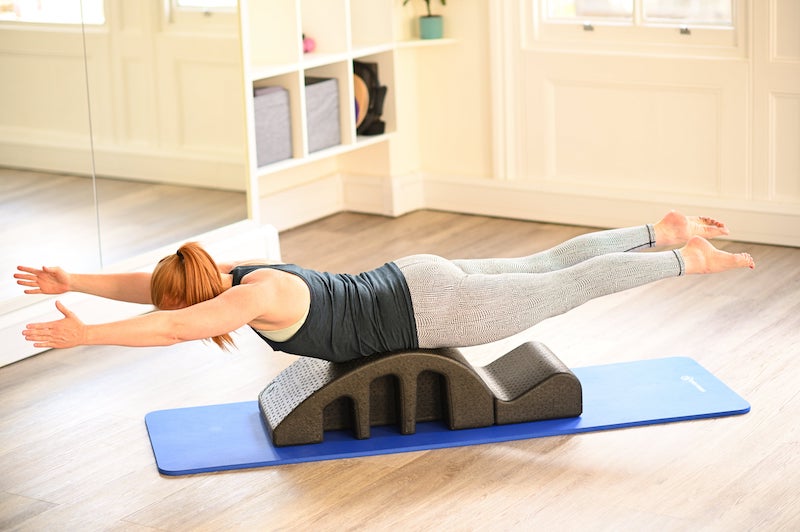
3 Pilates Ladder Barrel Exercises
Bridging
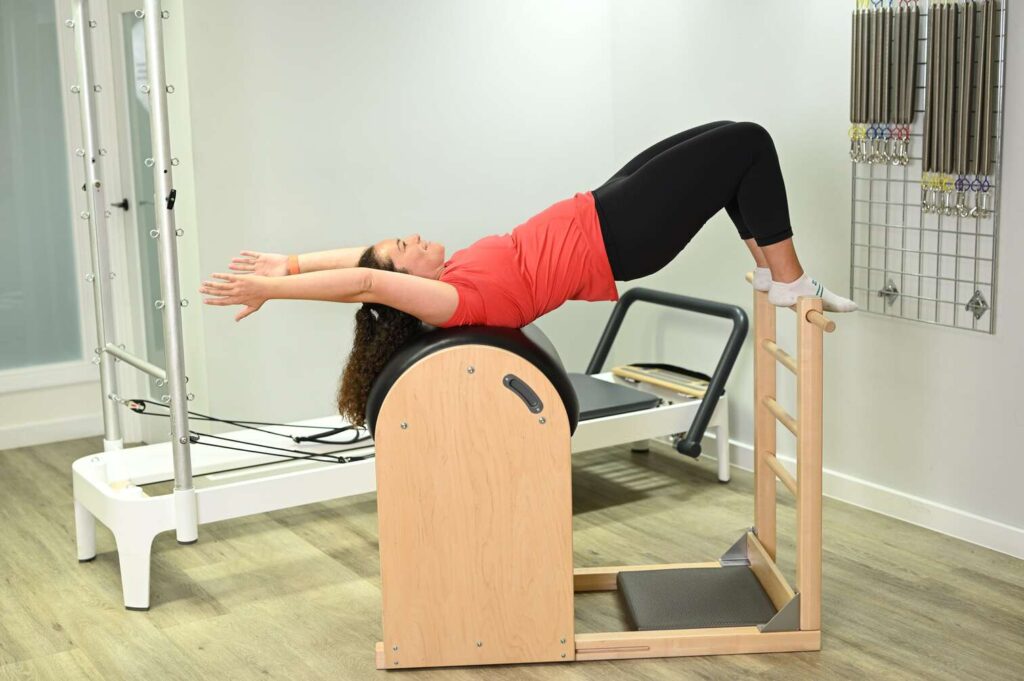
Bridging on the ladder barrel adds a whole new dimension to the standard bridging exercise. Bridging on the ladder barrel enables you to roll your spine through a greater range of movement than you do on the mat. As you drape yourself down the barrel, there is a sense of elongating the whole spine. As you lift up into the bridge you can focus on rolling your spine away from the barrel and at the top of the moment you can really open the chest and stretch the upper back.
Side Sit Up
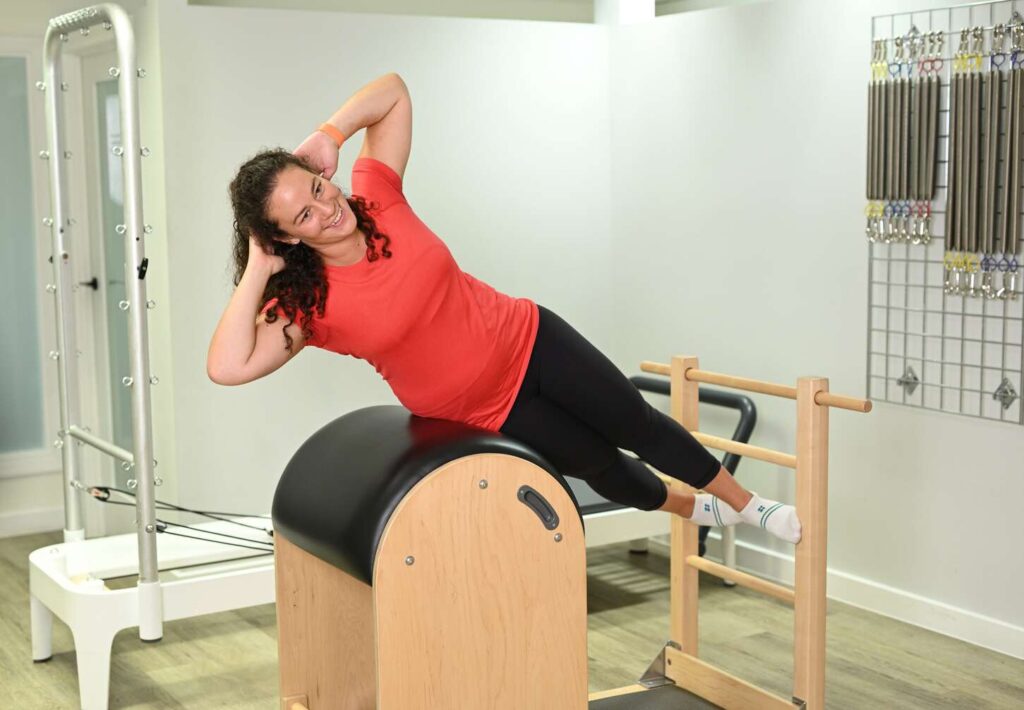
The curved surface of the barrel provides an ideal service for you to wedge the pelvis in a fixed position as you work into a sideways movement. This exercise is really challenging for the lateral abdominal and back muscles. To make the exercise harder – you can wedge the feet onto the rungs of the ladder. To make the exercise easier, the feet can stay on the ground.
Short box series
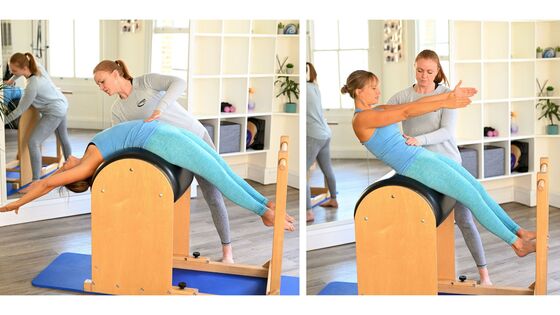
This is a great exercise for the abdominals, but can also be a great spinal mobility stretch for those who have the range. Sitting with the pelvis against the box, and the feet against the ladder, gives more support than sitting on the mat, and is easier for most people to achieve. Working in a small range, you will feel the lower abdominals working. Rolling all the way down and over the barrel is a lovely spinal mobility stretch for those who have the range. Rolling back up from this position works the abdominals from a lengthened position – which provides a contrast to standard abdominal exercises on the mat.
5 Pilates Spine Corrector Exercises
Supine stretch
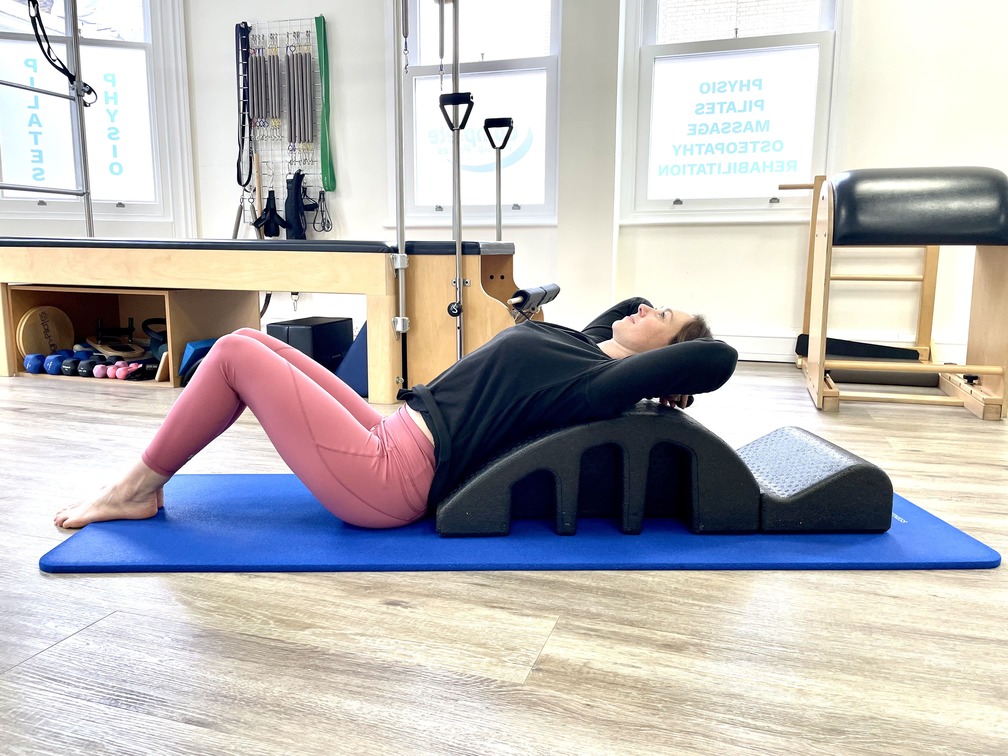
Supine stretch on the spine corrector is a variation on the ladder barrel exercises. With the spine corrector, you have more support from the floor and the curve of the spine corrector is not so deep, so leaning back over the spine corrector is more achievable. This is a perfect alternative for those of us who are not gymnasts or dancers! Draping back over the spine corrector is a great way to open out the chest and mobilise the upper back. It’s a great antidote to sitting.
Rolldown reach
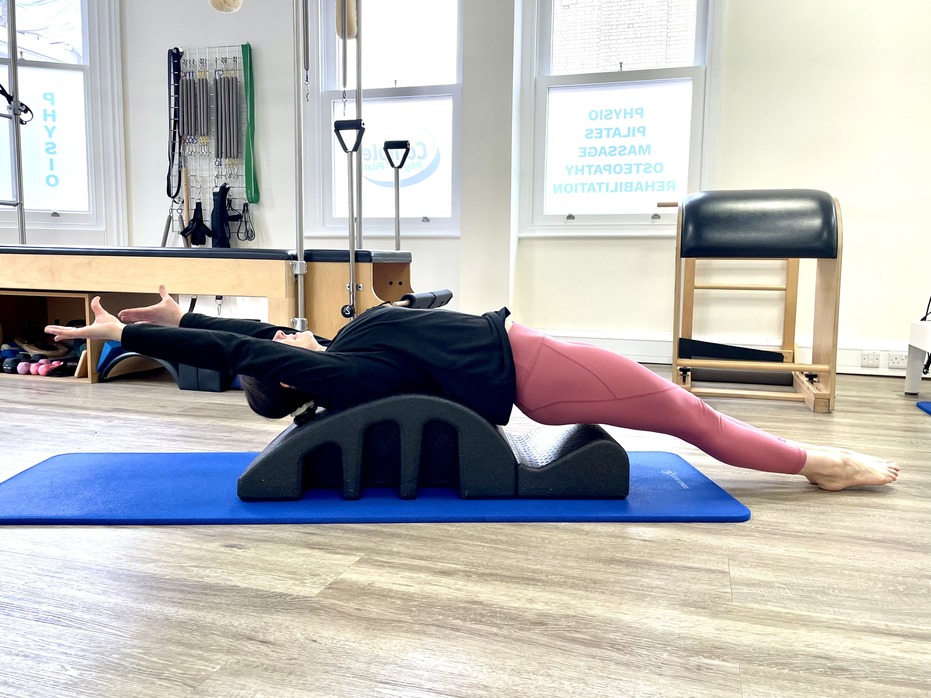
Rolldown reach takes the supine stretch a little bit further and into a delicious stretch for the whole body. You start sitting in the little hollow in between the humps of the spine corrector. As you roll back onto the spine corrector the legs stretch away in front of you and your bottom lifts out of the hollow. As you roll back up, the arms guide you forward and you can focus on rolling yourself away from the surface of the spine corrector.
Side Sit Up
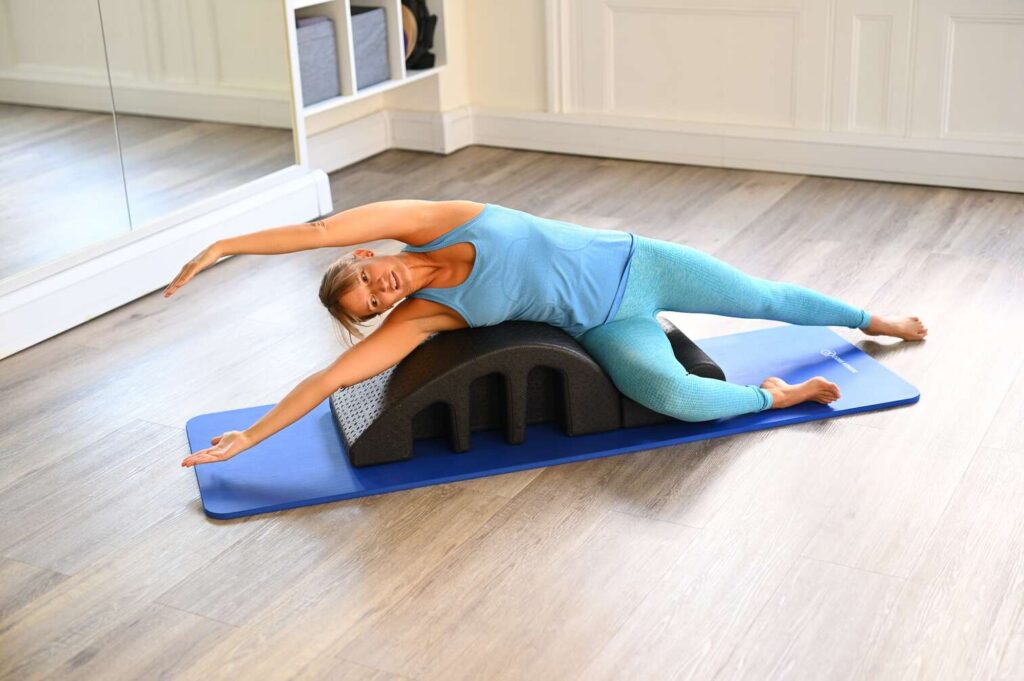
The side sit up can be done on either the ladder barrel or the spine corrector. The spine corrector can be a bit more comfortable than the spine corrector for the side lying position. On the spine corrector there is a bit more emphasis on spinal mobility and lengthening but both exercises target the lateral muscles of the torso.
What do our experts say?
“The spine corrector and ladder barrel are excellent forms of equipment for exercise. They can help to stretch, align and strengthen the body, particularly the core and spinal muscles. They are great for improving core control, spinal mobility and strength in all directions. They can also be a fun way to experience inversions!’
The benefits of the barrel and spine corrector
Unless you’re an acrobat or paint a lot of ceilings, you probably don’t spend much time rotating or extending your spine.
This might not seem like a big deal, but it is actually really problematic when it comes to our spine.
Modern life forces us to spend hours slumped forward over a computer, which results in hunched postures, sore backs and a whole host of other health problems. To counter this – and keep our spine healthy – we need to be moving the body in all directions.
This is where the barrel and spine corrector comes in. Their rounded surfaces support these extension and side-bending movements and through this help to improve the mobility, flexibility and strength of the spine.
Supporting and challenging the body
Of course, side bending, spine extension, spine flexion and rotation are possible without the ladder barrel and spine corrector – if you’ve tried mat Pilates you’ll know this is the case.
But these curved surfaces support the spine and encourage it to move more evenly when creating these shapes. This make these exercises safer and more attainable, which is especially helpful when it comes to teaching Pilates to pregnant women, people with injuries or beginners.
This is why Complete Pilates think the ladder barrel and spine corrector are essential for practising Pilates, and why we love including exercises on these pieces of equipment in our sessions.
Want to see what all the fuss is about when it comes to the ladder barrel and spine corrector? Then why not come and try a studio class of Pilates in Angel or 1-2-1 session with Complete Pilates in London at any of our studios? You can also visit us at our Pilates studio in West London and our Pilates studio in the City of London.
Education is key:
These blogs are designed to give information to everyone, however, it is important to remember that everyone is different! If you have not seen one of our therapists and have any questions about injuries, what you have read or whether this may be useful to you, please just ask. We are more than happy to help anyone and point you in the right direction. Our biggest belief is that education is key. The more you understand about your injury, illness and movement, the more you are likely to improve.


